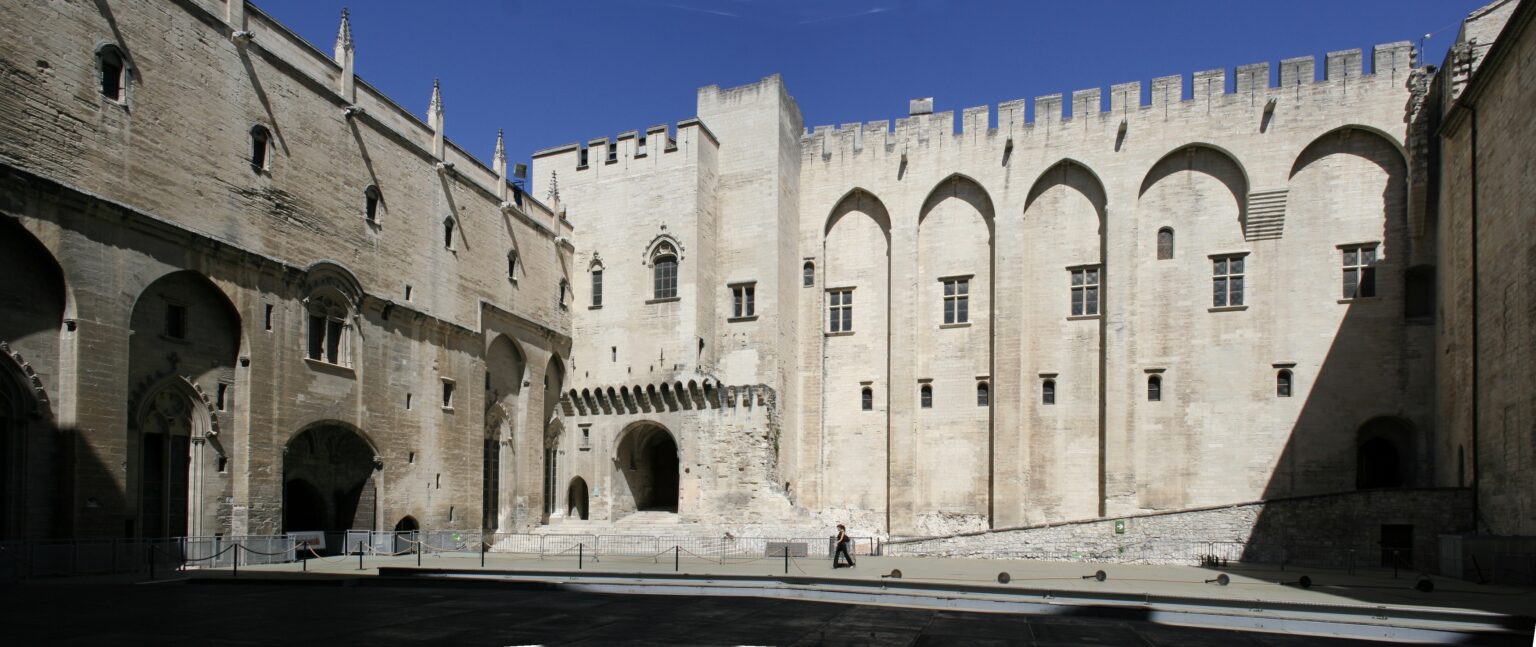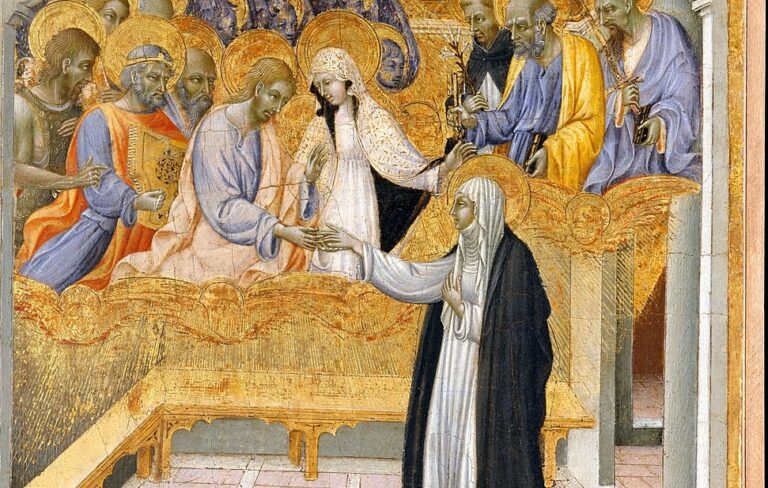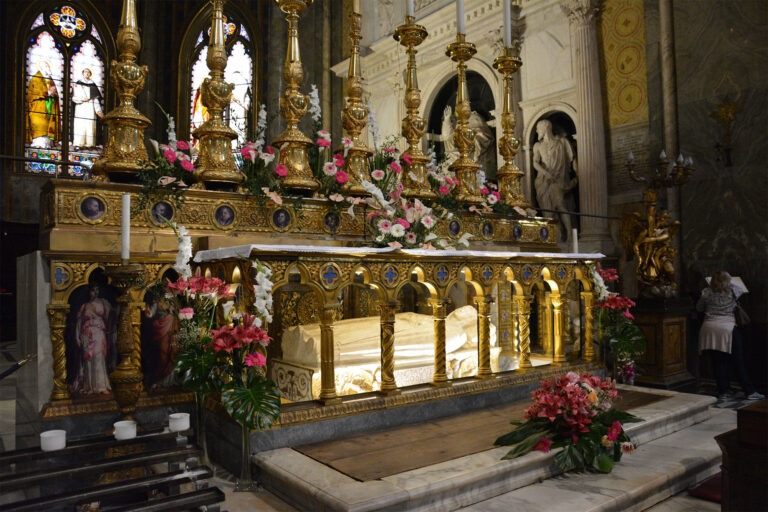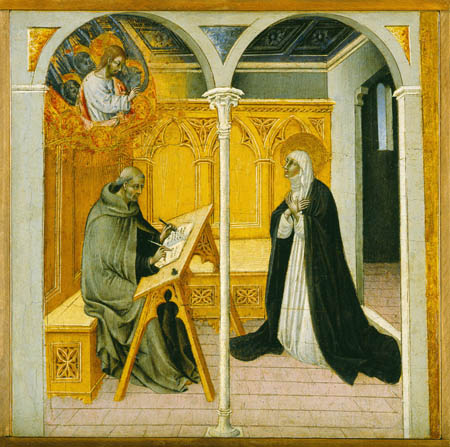29th April 2021
St Catherine, Patroness of Europe and Italy
Stefan Kaminski
Europe has six patron saints, amongst them St Catherine of Sienna, who is also shared with Italy as patron saint and whose feast is today.
The remarkable Catherine is known, amongst other things, for her hard-hitting reform of Church politics, including persuading the Pope to return to Rome from Avignon and reconciling his successor with the Roman Republic. What is even more remarkable though, is that she did all this before dying at the age of 33.
Neither was Catherine brought up in the sort of circles that were used to such high-level diplomacy. She was the youngest of the large family of a tradesman, who nonetheless was one of a faction that ruled the Republic of Sienna for a brief period in between revolutions. Born in 1347, she was graced with a deep love for Christ and with visions from her earliest years. This put her firmly on the path towards a consecrated, religious life as the means to unite herself to her one, true Love. Her hard-headedness was quickly revealed as this course of life was not quite what her parents hoped for. Indeed, aged 16, she cut off her long, beautiful her in protest against their desire for her to attract a suitable husband.
However, in her active and practical mind Catherine was equally sure that she did not want a cloistered life. She therefore joined the lay branch or third order of the Dominicans, choosing to wear the Dominican habit and making a promise to God of celibacy. After three years of enclosed prayer (aged 16 to 19) and mystical experience, she emerged to begin serving the sickest and poorest in the Sienese community. Her joy, deep spiritual insight and practical wisdom quickly attracted a group of men and women disciples around her. Together, they began travelling the country, calling both the laity to conversion and the clergy to reform.
In 1370 (aged 23), Catherine received a particular vision of the next life and, together with this, a call to enter public life. She began to write letters to influential public figures, extending her call to conversion to them. The depth of philosophical and theological knowledge that she had gained through prayer, and her complete dedication to God, resulted in this young lady quickly gaining the attention of the day’s leaders, including Pope Gregory XI. The latter was currently residing in Avignon, which had been sold to the Papal States in 1348. Catherine was adamant that the Pope should reside in his own see (like any other bishop), wanting him to reform the clergy generally and also the administration of the Papal States, and so to help bring peace to a fractured Italy.
In 1376, she was sent as an ambassador for Florence to the Pope in Avignon to sue for peace in the war that had broken out between the two. Although she was unsuccessful at that moment (mainly due the constant shifts in power in the Florentine government), the impression she made on the Pope convinced him to return to Rome, despite the opposition from his cardinals and the French King. Back in Rome, the Pope in turn sent her to Florence to negotiate peace in 1378. After a tumultuous six months in Florence, during which she narrowly escaped an assassination attempt, peace was finally achieved. In the meantime however, Gregory XI had died and been succeeded by Urban VI.
The election of Pope Urban VI was followed by a schism within the Western Church, as the electing cardinals, influenced by political concerns and pressures, backtracked on their choice. Claiming an invalid election, a small number of cardinals elected another candidate, who settled into Avignon as Clement VII.
Catherine, in the meantime, returned to Rome, continuing to work strenuously to effect reforms amongst the clergy and to serve the destitute in the city – as she had continued to do in Siena. She also took up the cause of Pope Urban VI and the unity of the Church, sending streams of letters to low and high alike, in all directions. At the beginning of 1380, she began suffering a mysterious agony after imploring the Lord to take her body in sacrifice for the unity of the Church and for the sins of the world. This suffering culminated in her death on 29th April, but not before her last diplomatic coup of bringing about a reconciliation between the Roman Republic and Urban VI.
St Catherine’s remains are buried under the high altar of the church of Santa Maria sopra Minerva in Rome, next to the Pantheon. She leaves us some 400 letters, besides her prayers and key work, the “Dialogue”, which together are recognised as having greatly influenced Italian literature.




